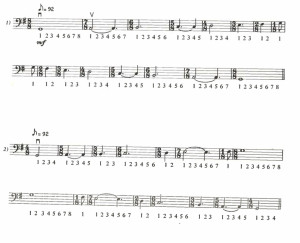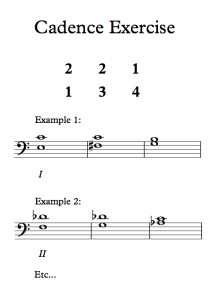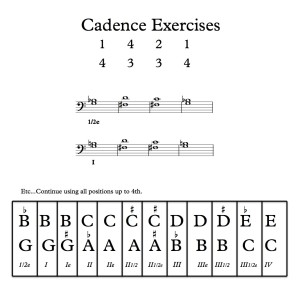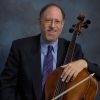
100 Cello Warm-Ups and Exercises Blog 12: Flexibility and Coordination Part 2
Robert Jesselson
In Part 1 of this blog on “Flexibility and Coordination” I discussed the flexibility of the fingers and wrist, and gave some left hand warm-ups such as finger-pushups and some bow arm exercises such as the “box” exercise. Today we will discuss some warm-ups that are useful to improve coordination. A large part of the physical approach to playing the cello involves coordination. Whether playing double stops, timing the speed of a shift, or coordinating the left and right hands we need to be aware of this aspect of our technique. When I was a student in Freiburg, we used to go out as a cello group to a pizza restaurant every Monday after our master classes. We would sit at a long table talking in a babble of languages – German, French, Roumanian, Japanese, Korean, Spanish, English – doing wrist exercises in the air, articulating with the fingers on the table, and gesticulating wildly while vibrating on our arms. The other German customers must have thought that we had just been let out of an asylum. But what we were doing was practicing coordination exercises, demonstrating fingerings, and showing each other what we had learned. The only way to learn and improve coordination is by doing it again and again – even at a pizza restaurant. Here are a variety of exercises that focus on coordination, in no particular order. First a couple of general coordination exercises, focusing on the bow:
Here is the Tortelier bow speed exercise from his book “How I Play, How I Teach”:
Another coordination exercise for the bow is this one: “Frog and Tip”
A good exercise for working on left hand/right hand coordination issues is this “Two Note Coordination Exercise”:
Chromatic coordination exercises 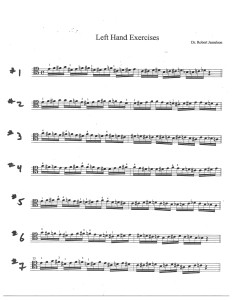

Cadence Exercises
Cadence Exercises #2:
Vibrato Coordination Exercise
Exercise for Evenness of Fingers
Next week’s Blog (#13) will be on Breathing and Relaxation.
Subjects: Practicing, Technique

